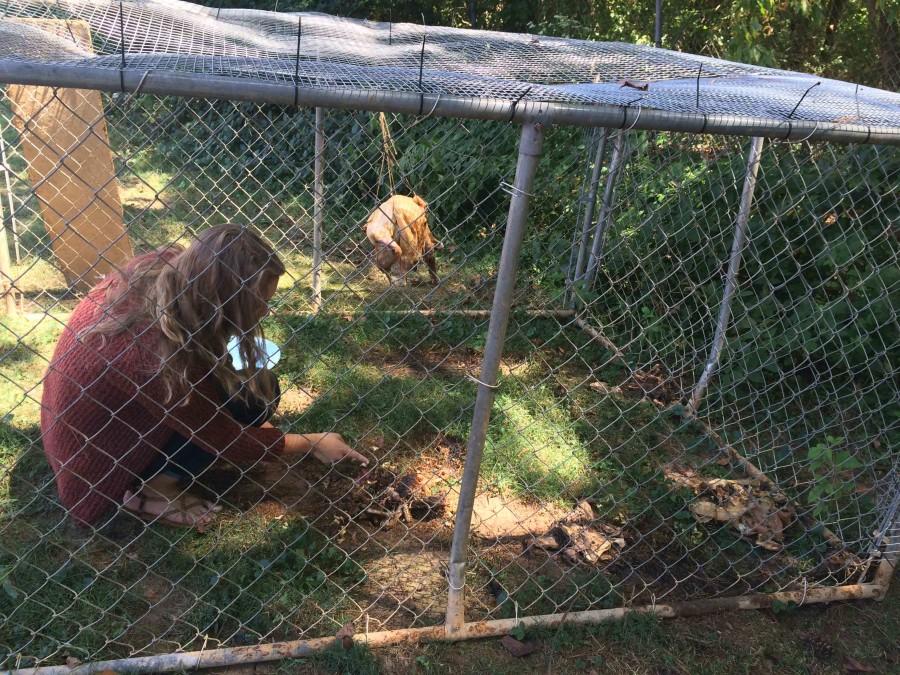Forensic science classes take fowl corpse of action
Junior Skylar Blakeman works in the chicken body farm for Mrs. Glenda Inman’s forensic science class.
September 28, 2015
It looks like a grotesque take of someone’s family dinner: a whole store-bought chicken hanging from the roof of a chain link cage. Bits of meat are rotted and just clinging on, and the insides are wriggling with maggots. The smell is harder to describe, but the phrase “dry-heave-inducing” does it some justice.
For her forensic science class, Mrs. Glenda Inman had students set up a body farm behind the CTE building using whole chickens. Forensic science students can observe how the chickens decompose in different settings.
“Students were learning to use the scientific process to set up the experiment, and I wanted them to learn the stages of decomposition and how to estimate time of death using entomological factors,” Mrs. Inman said.
There are multiple chickens: one on the ground, one hanging from the top, one submerged in water, and one charred. Students observe the decomposition and note the differences between each setting.
The chickens are comparable to bodies that are found in similar circumstances.
“I found it very helpful to have a visual rather than just reading it in the books on how the process starts and how it ends,” junior Skylar Blakeman said.
The students look for the development of the blowfly, the insect that starts as a maggot, on the carcasses. Because the blowfly is one of the first scavengers to reach the body, it can be used to estimate the time of death. This method is also used in human criminal investigation.
Mrs. Inman has had students do this experiment in the past, but with chicken livers. This is the first time she has used whole chickens for a body farm.
Alongside showing her students the stages of decay, Mrs. Inman wants her class to gain a better understanding of the scientific process as a whole. As for the course, students find it an engaging way to learn about forensic science.
“It’s been a lot of fun,” senior Madison Gordon said. “It’s really interactive, and we get to do a lot of activities.
“It’s really interesting, and it’s taught in a good way.”
